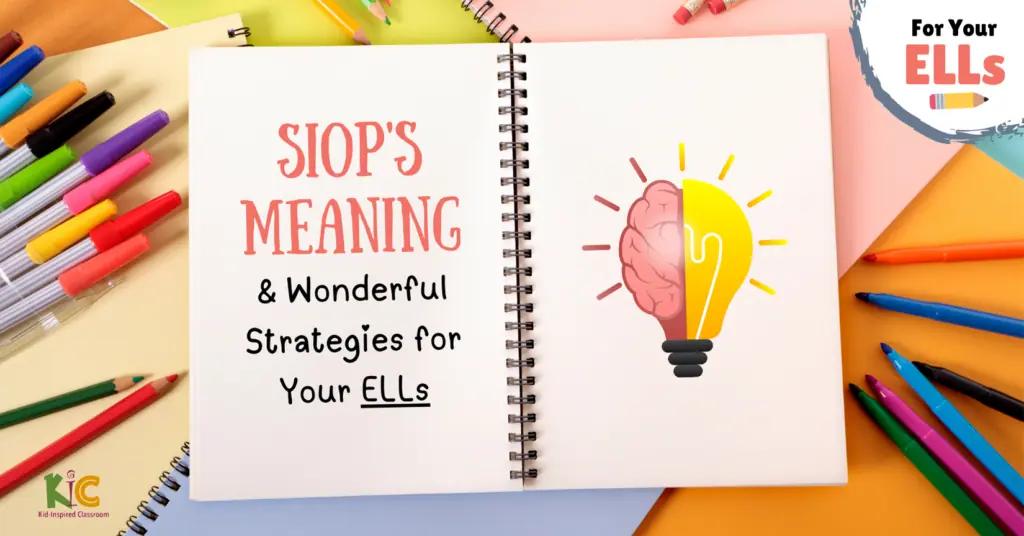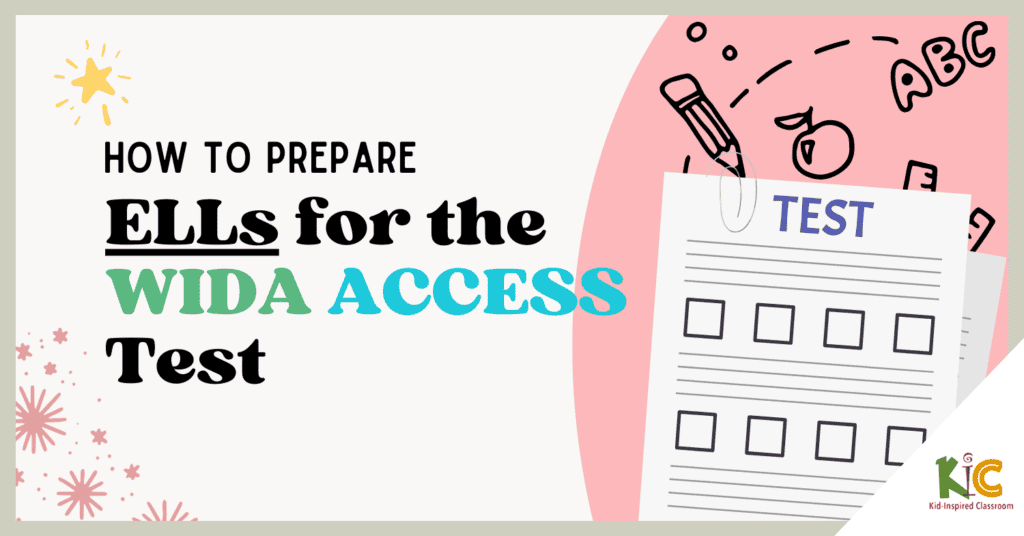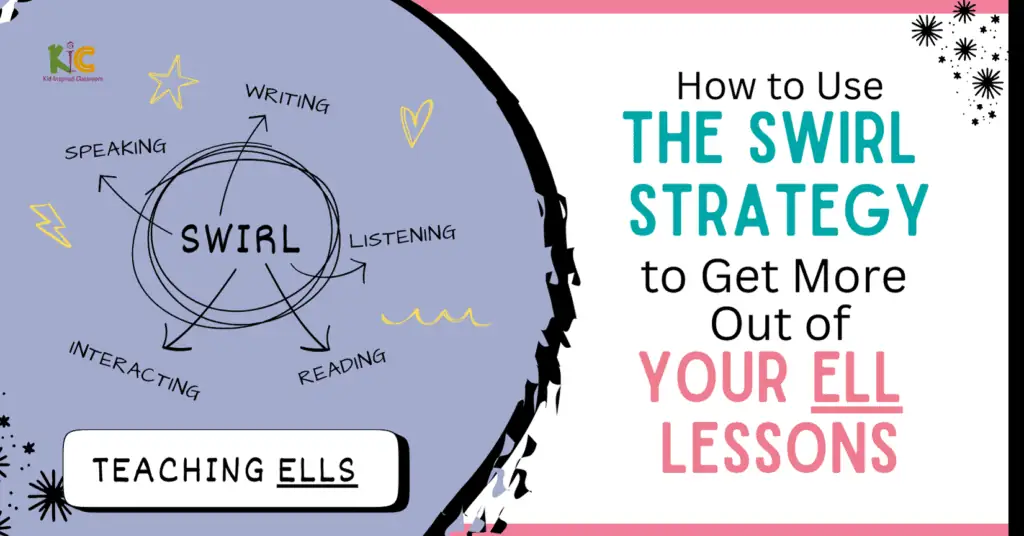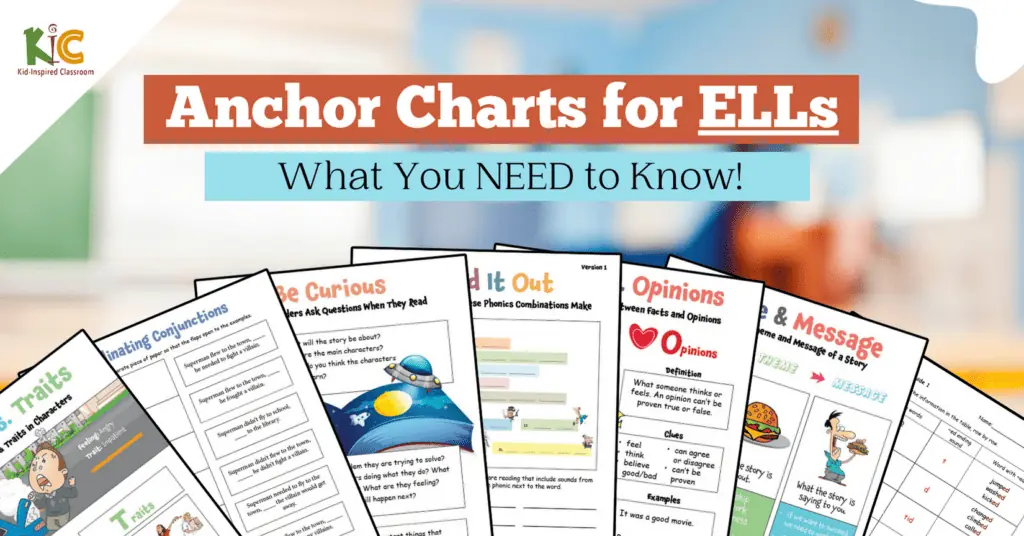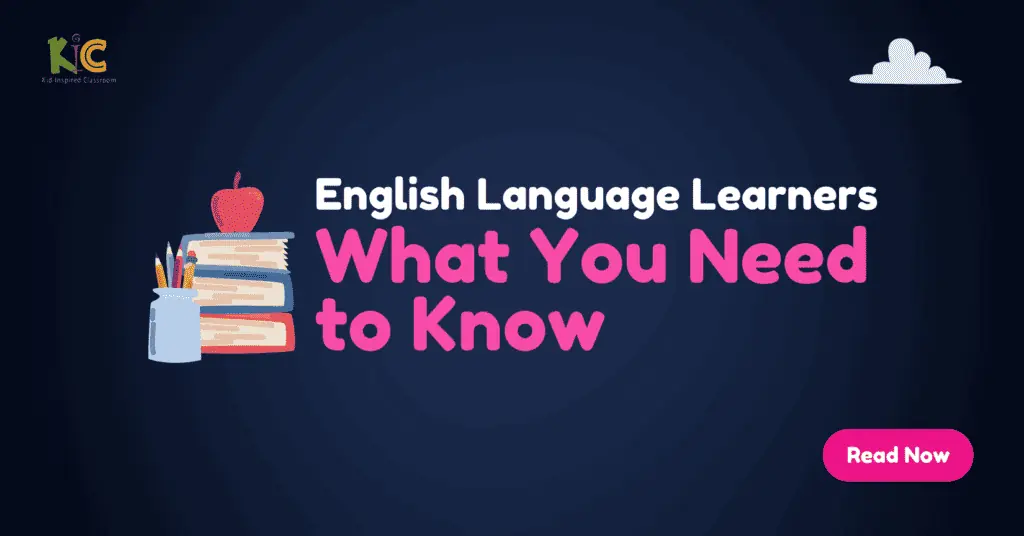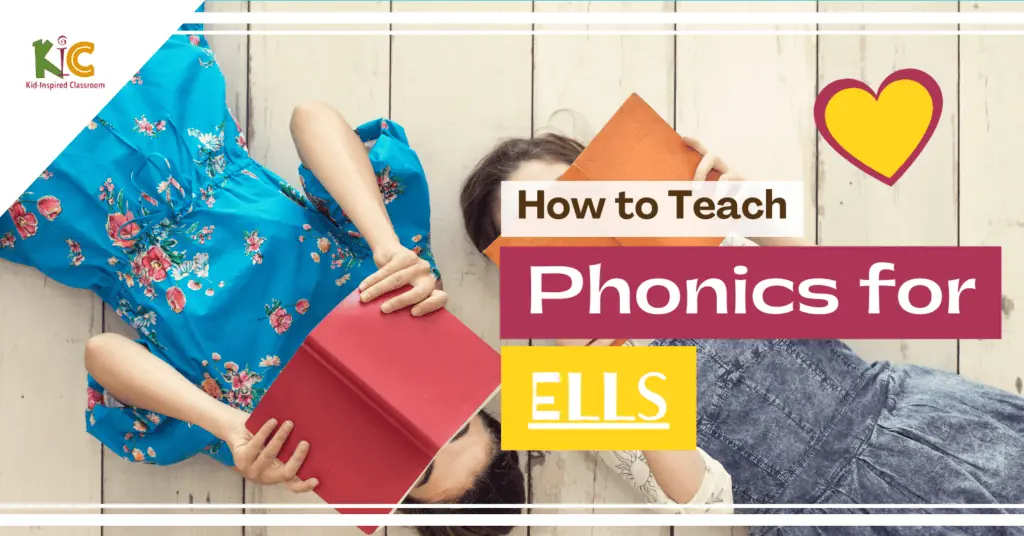
There are many ways of teaching phonics, and any of those ways will be effective as long as the students have learned the most common combinations of sounds and are able to sound out words on their own without help.
Research has shown time and again the difference learning phonics makes to students learning to read regardless of whether it is their first, second, or third language. Many native English speakers struggle to read in the United States because of the misconception that they will just pick it up by reading.
For many struggling readers, that unfortunately is not true.
There are students who learn to read that way, but they are the exception, not the rule. By teaching students systematic phonics you are giving them a tool to sound out any words that they do not know or do not remember.
Many teachers struggle to teach phonics because that is not how they learned to read. It took me many years as a teacher to get my head around the importance of phonics and how to teach them.
2 Important Points About Teaching Phonics for ESL
1. There are many words that don’t follow phonics rules (come, could, you, the, they, said). They are irregular. Students just have to remember how these words are read. I usually have the students sound out these words using phonics rules as normal and then tell them that they are irregular.
2. I do not teach all of the possible phonics combinations, only the most common and useful. There are some combinations for which there are only one or two words. They are just not common enough to justify the time it takes to teach them and often only cause confusion. I just call them irregular (I say “Ding Dong Words” with my beginners) and move on.
4 Steps to Teaching Phonics to ESL/ELL Students
Step 1: Alphabet
Students need to know their letters so well that they don’t have to think. You should be able to show a student any letter of the alphabet and they should be able to say the name and sound in about a second.
Step 2: Short Vowel Words
When the students know their alphabet letters really well, short-vowel reading isn’t too difficult. Still, some students will struggle. They should be able to sound out the words one sound at a time and then put them together.
Step 3: Blends & Digraphs
When you add blends (cl, br, ck) and digraphs (ch, sh) with the short-vowel words, students slow down a lot. The extra sounds are oten diicult to put together and will take a lot of practice.
Step 4: Long Vowel Phonics & Diphthongs
Long vowel phonics (ai, ee, oa) are difficult. You tell students that each vowel can have more than one sound and they need a lot of practice differentiating the long and short vowel sounds, especially if they came form an Asian speaking country.
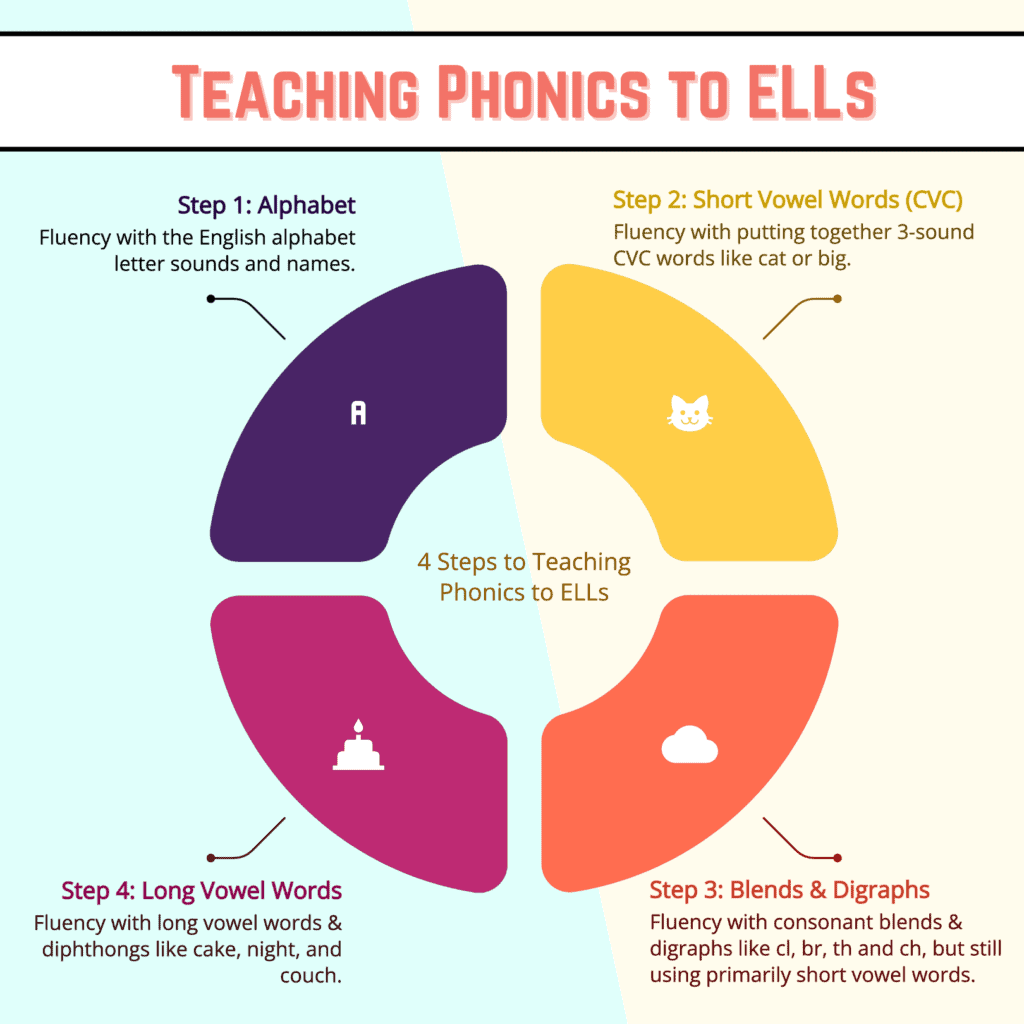
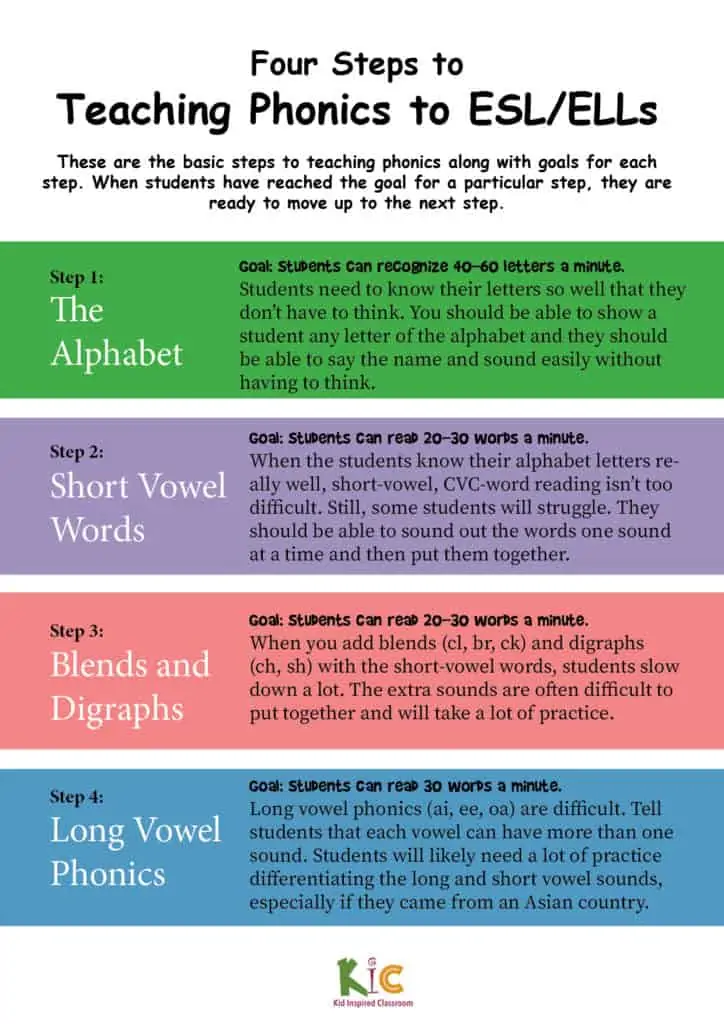
Download an Infographic to Share with Others
(Opens in a New Wind0w)
5 Engaging Phonics Activities to Use with Your ELLs!
- Phonics Flash Card Game – With students in groups of 3, one student is the caller. The caller holds up a phonics flash card. The other 2 students race to read it out first. The first person to read it correctly gets the card. After the phonics cards have been used up, the student with the most cards gets to be the new caller. This is a wonderful activity and one of my favorites. You can read more about the activity when teaching vocabulary as well as its benefits here.
- Bananagrams – With a collection of alphabet letters, there are loads of activities you can play. Bananagrams are a favorite of mine because the tiles are so nice to use, but they are a little expensive. You can also get away with just using printed letters on paper and then cutting them out. You can find activity ideas as well as printable alphabet letters here.
- Speed Challenge – I don’t usually recommend using large lists of words because it’s better to focus on meaningful texts, but a longer list of words can be fun for this activity where students see who can read the most words in a minute or who can read the list the fastest and clearest. This can also be done with a target text as long as the text includes mostly words the students have learned the phonics for at that point. The Kid-Inspired ESL Curriculum Membership includes texts like this for each unit.
- Annotating – Give students a target text and have them go through it with different-colored highlighters looking for specific phonics combinations they have learned.
- Teacher Challenge – Let students work in groups or individually to practice a target list or text and then attempt to read it to you, the teacher, individually. The goal is for a group to get all of the students to pass the challenge and then they can play a game together as a group. You just need to be careful that students in the group are patient and kind with teach other. We don’t want to create any undo stress on weaker readers with this activity.
Have a phonics activity you love? Share it in the comments below!
